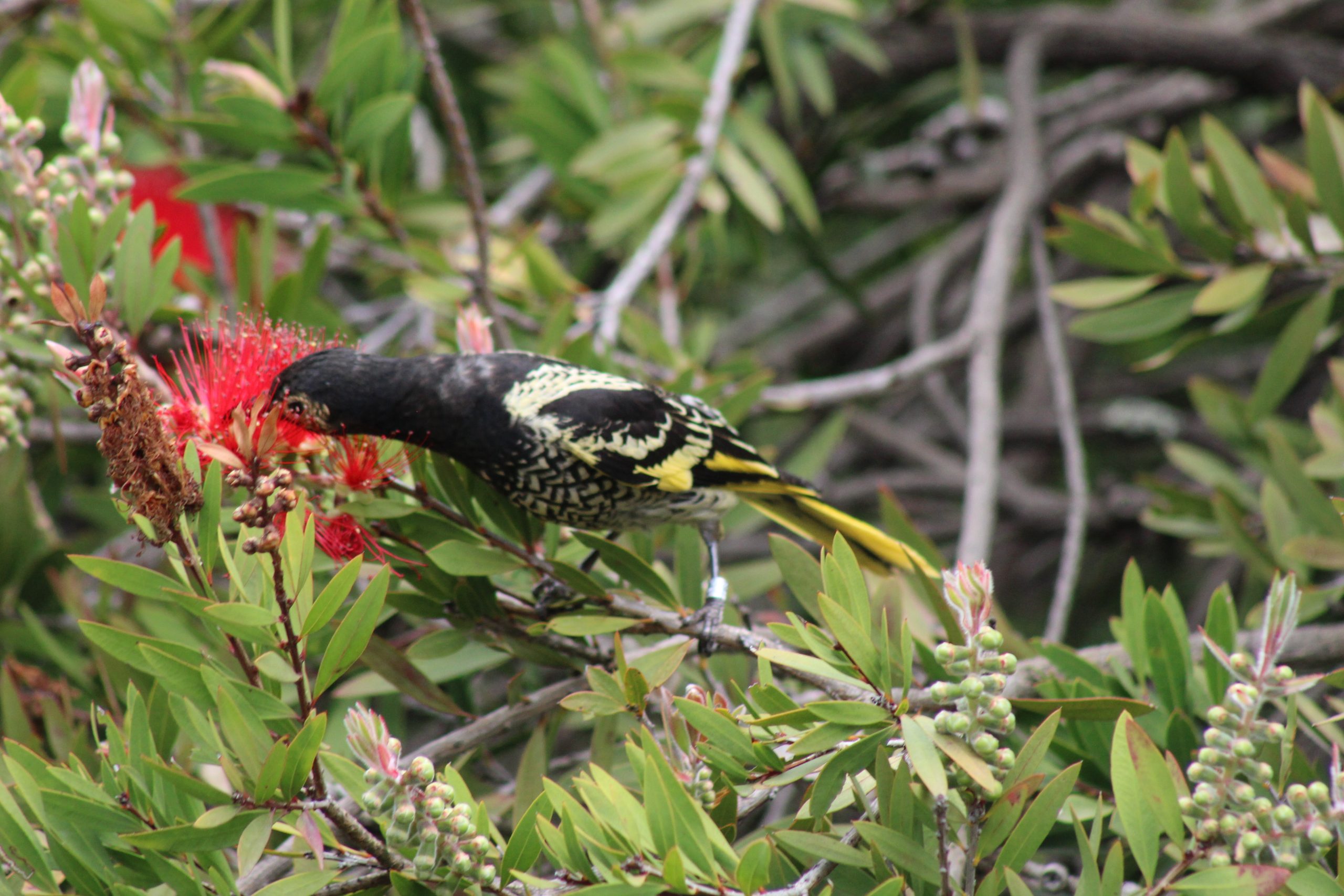Regent Honeyeater Project
AIMS AND OUTCOMES.
Aims
The Regent Honeyeater Project is an independent not-for-profit organisation that is bringing real change to the landscape and environment of the Lurg Hills of North Eastern Victoria, providing a more secure future for the threatened temperate woodland bird community and animal species.
Our core aims are action-oriented, informed by the best research available, empowered by a huge volunteer network, and showing today’s landholders in tackling complex ecological issues.
Our purposes include:
1. Increasing the population of several threatened species in the Lurg Hills, Winton Wetlands, Chesney Hills and Warby Ranges district of North East Victoria, focussing particularly on the Regent Honeyeater, Grey Crowned Babbler, Squirrel Glider and Brush Tailed Phascogale.
2. Protecting and restoring all significant remnants of Box/Ironbark habitat in the project area, aiming to reinstate ecological balances and create self-sustaining vegetation communities.
3. Boosting ecosystem resilience in the face of climate change, through an active revegetation program, using plants indigenous to the district.
4. Creating strategic habitat links within the project area and beyond, to assist rare species, seasonal movements and improve genetic diversity.
5. Initiating educational opportunities for landholders, schools, universities and community volunteer groups, aiming to develop awareness, understanding, skills and commitment to threatened species habitat restoration.
6. Engaging community volunteer groups, school students and university students, to assist landholders with the massive amount of on-ground work required.
7. Encouraging biological research projects, to quantify the flora and fauna benefits of the restoration work.
OUTCOMES
Paying attention and contributing to Recovery Plans for each species our work varies greatly and is site specific. Actions can include fencing and enlarging existing habitat; planting on productive sites to give high nectar flows; pruning heavy mistletoe infestations to save old growth trees; increasing plant diversity to improve habitat structure and restore ecological balances, and improving habitat connectivity at both the local and landscape level.
We work on private and public land including roadsides. Nearly all the plants put in the ground are propagated in our own nursery with the help of volunteers, using seed we harvest from indigenous, and often, rare plants.
Over the past 25 years, over 2200 hectares of habitat has been restored, more than 717,000 seedlings grown and planted on 642 sites, 310 km of fencing built, 400 nesting boxes placed in trees with over 41000 volunteer engagements and 180 landholders. The threatened wildlife are responding to the better conditions. Threatened woodland birds are moving into our planted areas only 5 or 6 years after planting, and aggressive birds like Noisy Miners are losing ground to the shyer birds in the dense shelter we are providing.
Other outcomes of the project include increases in the population of endangered Grey Crowned Babblers, Squirrel Gliders are living and breeding in our nest boxes and the local rarely seen Brush-tailed Phascogale has extended its range dramatically. Approximately 4-6 years after planting the corridors are becoming connecting highways for birds and animals to pass through. The Regent Honeyeater Project is an exciting community based project which has celebrated great success’s and looks forward to continuing its work into the future.

